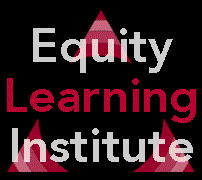
|
|
|
|
an EdChange project by Paul C. Gorski
|




|
Calendar and Cultures by Richard Alpert Amherst Educational Publishing deals exclusively with multicultural and diversity educational and training materials. One of our publications is a Multicultural Resource Calendar that contains listings and descriptions of birthdays, historical/cultural events, days of religious observance, and days of special observance for over 35 cultural, religious, and other groups. Putting the Calendar together highlights how much a calendar is rooted in particular historical, cultural, and religious assumptions and perspectives. The Gregorian Calendar, with the new year starting on January 1 with 12 months varying in length from 28-31 days, is the most familiar calendar to most of us. It reflects a universal agreement about how major components of time will be defined and allows for interaction and communication across every religious, cultural, political, and geographical boundary. It provides a framework that allows us for those interactions to behave as one community. However, it is not the only calendar, nor even the primary one, that defines the year and the days to be observed and celebrated for many cultural, religious, and ethnic groups. In order to capture the important occasions for millions of Americans who belong to varied ethnic, religious, and cultural groups groups, it is necessary to use other calendars based on other assumptions both about how the components of time are defined and about what occasions are to be observed andcelebrated. From the perspective of specific cultural and religious groups, the simple question about "what year is it?" and the critical components of that year becomes more complex. What year is September 1995 for an observant Jew, a Muslim, or for traditional Chinese, Vietamese, and Koreans. For the Jew, September 1,1995 is in year 5755 and on September 25, 1995 becomes year 5756.. For a a Muslim, September 1, 1995 is in year 1416 and does not become a new year until May 18, 1996. For Asian cultures that follow the Chinese lunar calendar, the new year does not begin on Januray 1, 1996 but on February 19, 1996 ( the Year of the Rat) and is not year 1995, but year 4694. To make matters a little more complex, the answer to the question, "when does the year begin next year?" does not, as it does for those who follow only the Gregorian Calendar, have the same answer every year. Many cultural and relgious groups base their calendars on calculations of the phases of the moon or a combination of moon and solar calculations resulting in the days for particular events, such as the beginning of the year, moving each year. The beginning of the Chinese New Year, for example, can vary from mid-January to mid-Februrary of the Gregorian Calendar. Long-range planning that takes into account days of special meaning to many different cultural groups, therefore, becomes much more complex than simply consulting a perpetual Gregorian Calendar. The ways in which the year is defined, moreover, can vary for ethnic groups as well. While the differences may not be as sharp, various ethnic groups in the United States may emphasize different dates as important to observe and celebrate. For example, Kwannza, which is more a cultural than religious occasion, has become as important, and to some more important, than Christmas for many African Americans and celebrating Martin Luthur King's Birthday has become the most significant day in the year for African American historical and cultural remembrance. Many Mexican Americans prefer to celebrate the traditional religious Day of the Dead holiday from the evening of October 31 through November 1 instead of Holloween. For any individual, therefore, The calendar becomes a way of connecting to the particular ethnic, cultural, or religious group of which they are a part. For those not part of that group, understanding and knowing the calendar that defines the year and its critical days of demarcation for a particular group helps to provide a way of understanding and connecting with that group. This can happen in many ways. When we are planning occasions as part of an organization, or in our everyday interactions, that involve people from varied cultural, ethnic, and religious backgrounds, we need to take account of what days are important from their perspective as well as from our own. This is not only important for practical reasons, but also helps to create the complex positive bonds of connection in an increasingly diverse society that maintains our common community while at the same time respecting and acknowledging the ways in which we are different. In a somewhat more positive way, understanding the different calendars that shape time for different people helps us to make connections and share in the lives of those who differ from us. Just as wishing family, friends, and acquaintances a "happy new year" on January 1 is one of the social bonds that makes us one community, greeting those whose new year is celebrated on a different day, and perhaps at a very different time in the "Gregorian" year, is also a small, but significant step in creating common ties among the many different communities withinour society. In addition, being aware and supportive to others at those times during the year that have sigifigance to them can help to create those harmonious connections that make all relationships more positive, meaningful, and satisfying. Respond to Richard Alpert via e-mail.
|